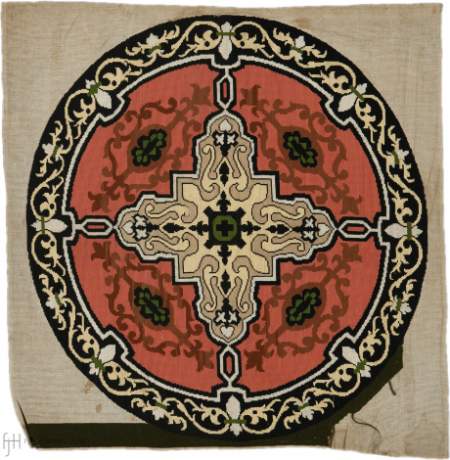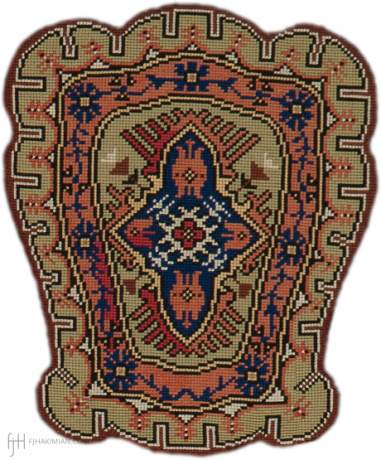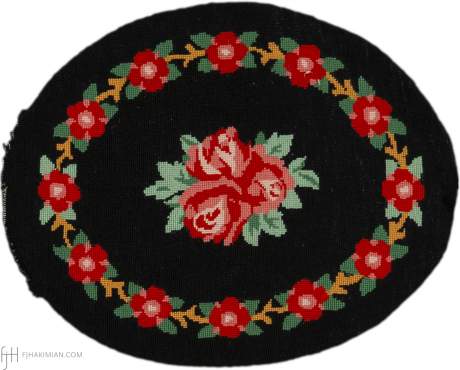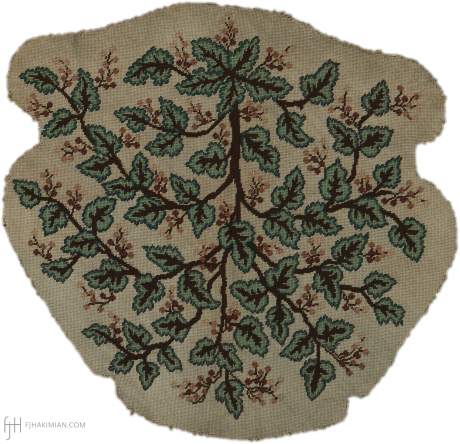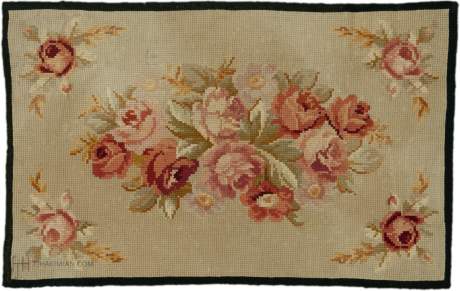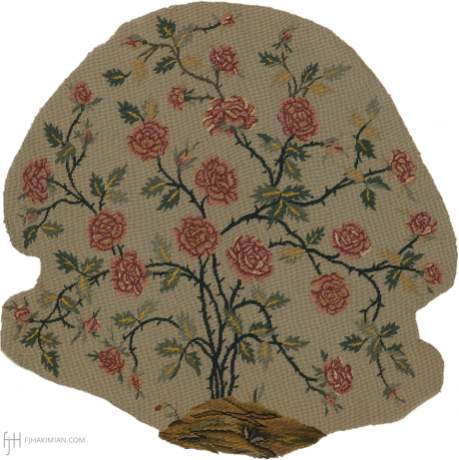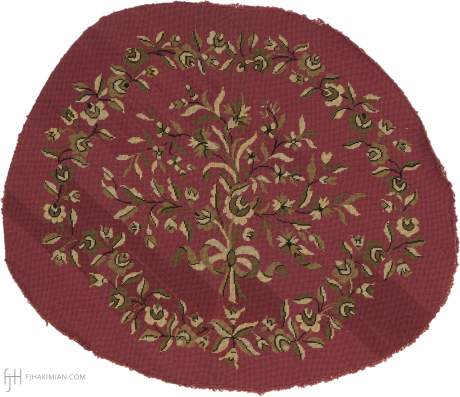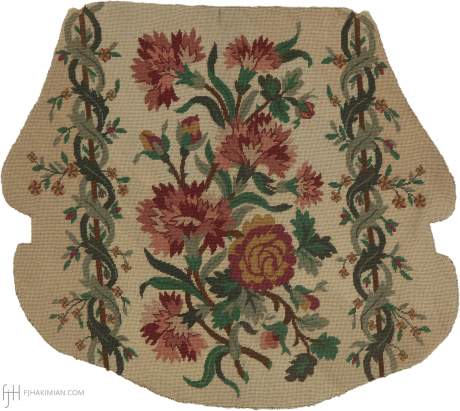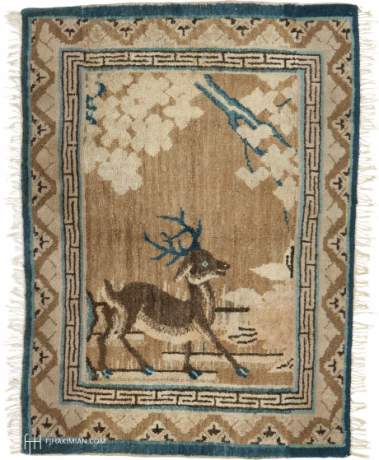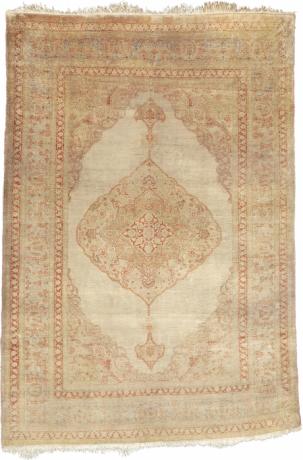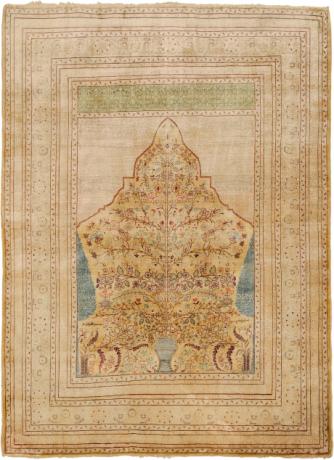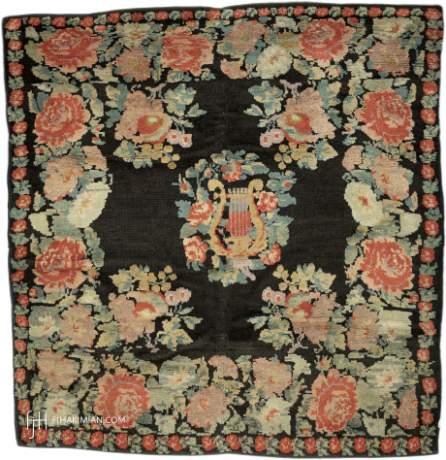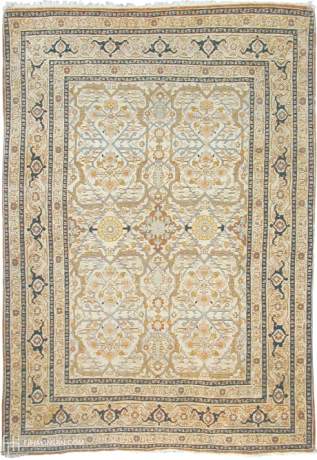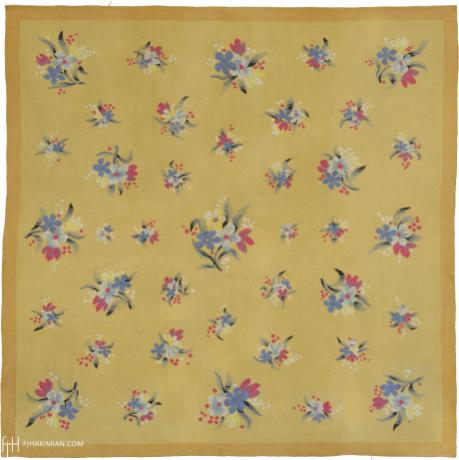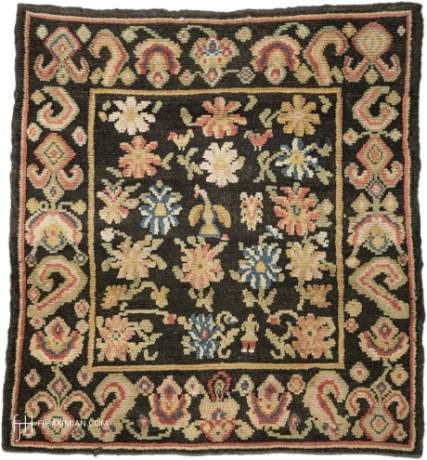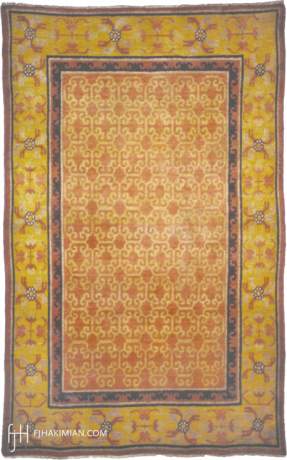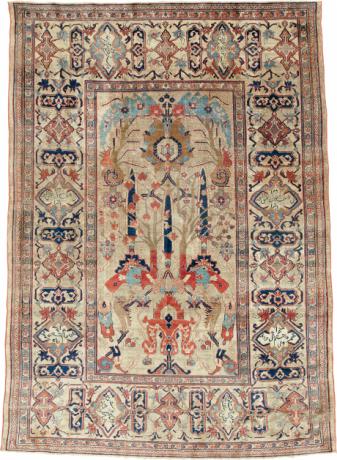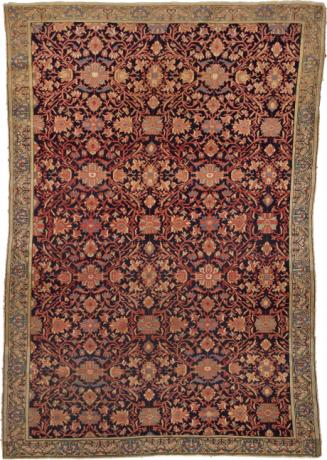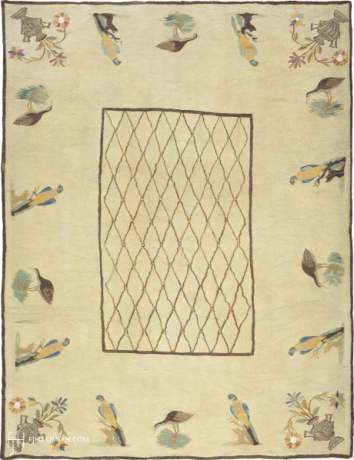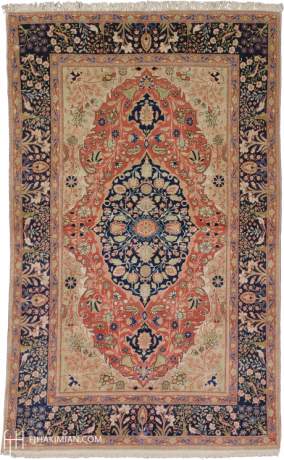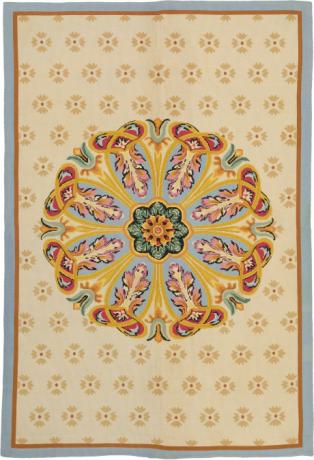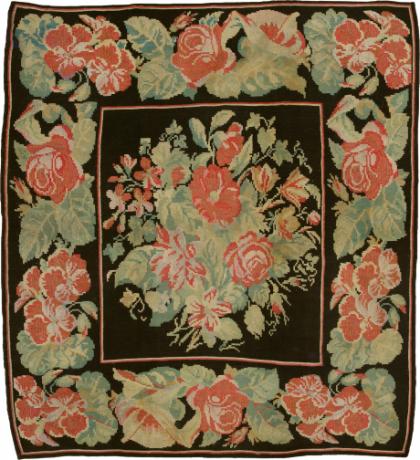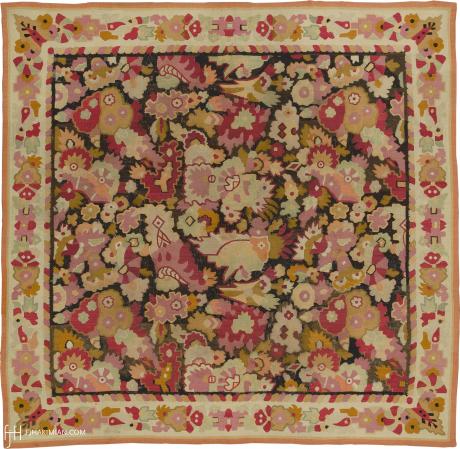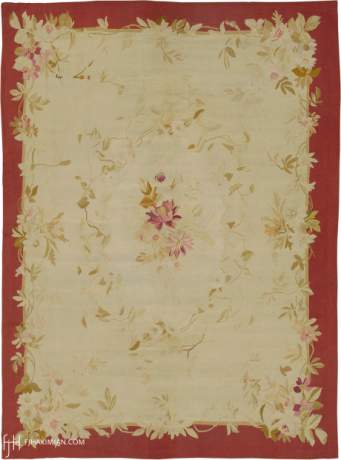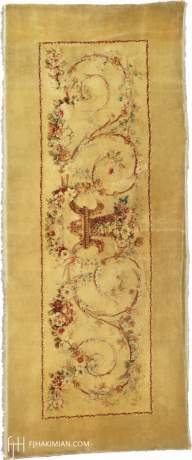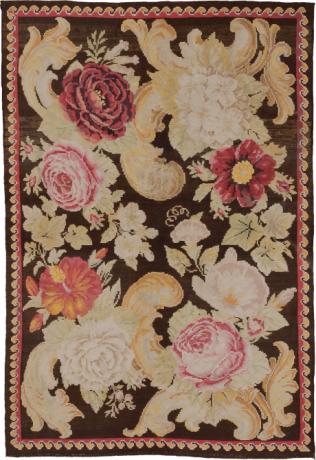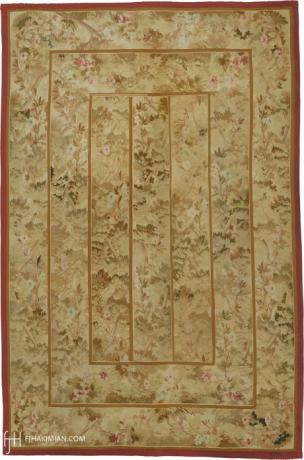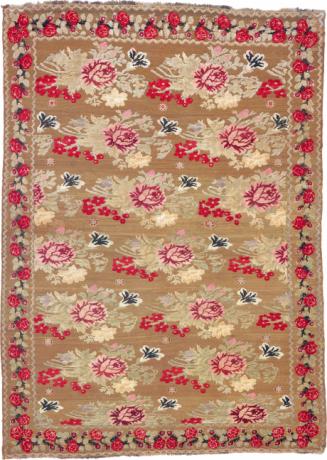The late 18th century was an age of revolutions, particularly in art and design. During this century there were seismic cultural shifts in the style of carpets produced during this period, and a particular deviation from the ornate, traditional style. Each expression varied throughout European capitals as a new focus on fashionable interiors, elegant simplicity, and the lightness of the early neoclassical period began to emerge and flourish. This change in cultural atmosphere provided a sense of informality that seemed to sweep away decades of ostentation and formalism. Often associated with the Rococo and Baroque periods, this departure from traditionalism created a more eclectic and global fashion than in previous decades. More…
The late 18th century was an age of revolutions, particularly in art and design. During this century there were seismic cultural shifts in the style of carpets produced during this period, and a particular deviation from the ornate, traditional style. Each expression varied throughout European capitals as a new focus on fashionable interiors, elegant simplicity, and the lightness of the early neoclassical period began to emerge and flourish. This change in cultural atmosphere provided a sense of informality that seemed to sweep away decades of ostentation and formalism. Often associated with the Rococo and Baroque periods, this departure from traditionalism created a more eclectic and global fashion than in previous decades. More…
The late 18th century was an age of revolutions, particularly in art and design. During this century there were seismic cultural shifts in the style of carpets produced during this period, and a particular deviation from the ornate, traditional style. Each expression varied throughout European capitals as a new focus on fashionable interiors, elegant simplicity, and the lightness of the early neoclassical period began to emerge and flourish. This change in cultural atmosphere provided a sense of informality that seemed to sweep away decades of ostentation and formalism. Often associated with the Rococo and Baroque periods, this departure from traditionalism created a more eclectic and global fashion than in previous decades.
Designers took inspiration from the new treasures unearthed in the ancient cities of Rome, Naples, and Athens, incorporating the forms and motifs of the ancient world into their 18th century designs. The neoclassical styles of the period were quite diverse among the European capitals, often expressing characteristics such as simplicity, elegance, charm, and grandeur. Our 18th Century European Collection at FJ Hakimian is comprised of the finest Italian, French, English, Russian, and Scottish rugs. From Bessarabians to Axminsters, each one exemplifies a rich and revolutionary piece of a significant shift in textile history.
Read more: Our blog "An Age of Revolution: 18th Century European Carpets"
No carpets matched.

